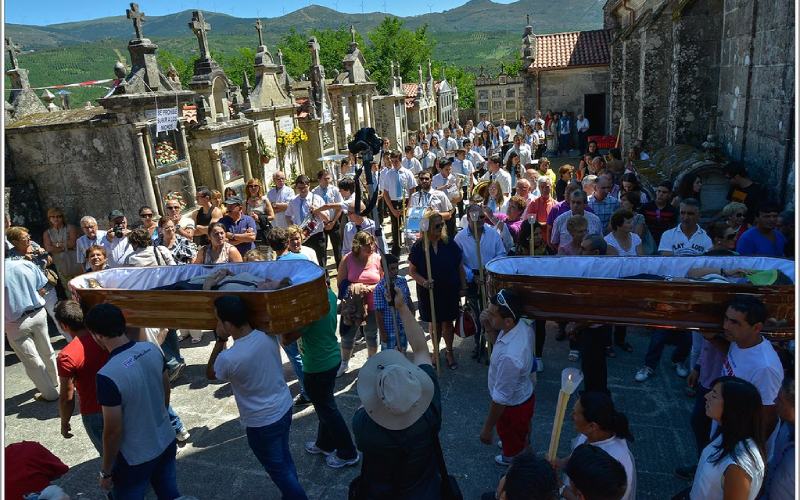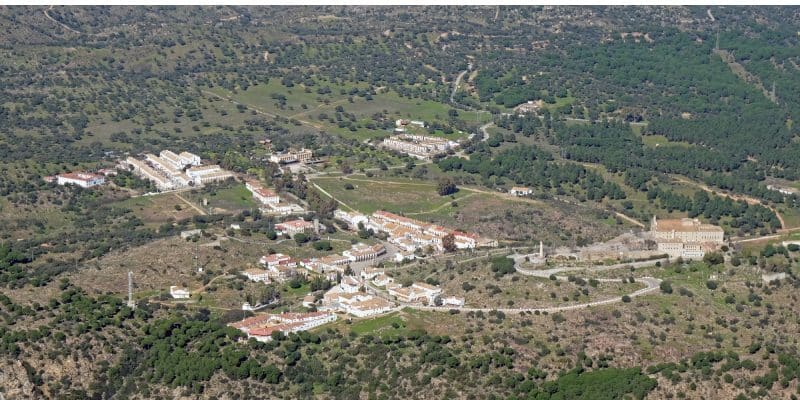
Spain is a land of traditions that has strong religious roots, so many of its customs are influenced by religion. One of these are the ‘romerías’. These are pilgrimages to a shrine or hermitage, dedicated to a saint or a virgin. In many of the provinces of Spain, thousands of pilgrims are celebrated every year in order to visit their saints. It is a festivity that involves different feelings: joy, celebration, silence, promises, devotion…
Here there are the most popular ones which takes places in Spain. Would you like to visit any of them?

Procession of the Santa Marta pilgrimage. | Flickr
This celebration takes place every 29th July in a village of Pontevedra, called As Neves. The origin of the devotion to Santa Marta was based on the Way to Santiago in the Middle Ages. However, the pilgrimage of Santa Marta was first mentioned in writing in 1700, more than five centuries of history.
It is fundamental to mention the ‘Procesión de los Cadeleitos’ (Cadeleitos Procession) which consists of a parade of coffins with alive people, carried by relatives, who walk alongside the saint in the procession for different reasons: some have been on the verge of death and want to give thanks to the saint; while others do so out of devotion or to pray. Another curious element is the ‘Trinos de las plegarias’ (Trinos of the prayers). In this celebration, two women and a man follow the procession to the hermitage, and they sing prayers dedicated to the saint.

Cerro del Cabezo, Andújar. | Wikimedia Commons
This pilgrimage is considered the oldest one of Spain. It is claimed that the first time that this festivity took place was in 1227, when the Virgen appeared to a shepherd of Colomera. The pilgrimage is followed by thousands of brotherhoods from all over Spain on foot, on horseback, by mule or by cart.
The date of this pilgrimage is the Friday before the last Sunday in April. However, the most significant event is the procession of the ‘Santísima Virgen de la Cabeza’ on Sunday, one of the most popular Spanish pilgrimages.
The date of this popular festival is the Sunday after San Marcos festivity (25th April). The usual starting point is from Tafalla, but pilgrims come from all over Navarre.
Its procession is spectacular, what makes this festivity one of the most popular pilgrimages of the country. Its ‘followers’ walk with large wooden crosses on their shoulders and are dressed in tunics. The final point of this procession is in the 14th century gothic style Salutation Cross.

Romería Virgen del Rocío. | Shutterstock
The brotherhood of Almonte is in charge of organising the pilgrimage of the Virgen del Rocío, one of the most typical in Spain. More than a million of people covered this route every year! Its origin dates back to the 16th century, and it is celebrated every Whit Monday. More than 121 brotherhoods make the route on foot, horseback or in cart from different places accompanied by music, flamenco costumes and dance along every kilometre of the way.
Its popularity increased even more in 1993, when San Juan Pablo II followed this pilgrimage and claimed: “everyone should be ‘rociero’.” A typical name of those who are very devoted to the Virgin.

Hermitage of Alarcos.| Wikimedia Commons
This pilgrimage consists of taking the Virgin from her hermitage in Alarcos, where she remains the whole year round, to the parish church of San Pedro four days before Pentecost. She spends four days there and numerous religious ceremonies are celebrated. At the end of this period, the young men of Valverde return her running back to the hermitage. It is said that its origin dates back to 1212 as a commemoration of the battle of Navas de Tolosa.